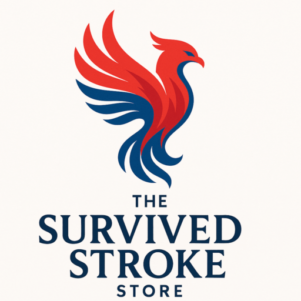The New Vivistim is here!
Revolutionizing Stroke Rehabilitation with ViviStim: A Hope for the survivors.
In the realm of medical advancements, there exists a beacon of hope for stroke survivors – ViviStim. This cutting-edge technology is revolutionizing stroke rehabilitation, offering new possibilities for those on the path to recovery. In this blog post, we will delve into the remarkable world of ViviStim, exploring its mechanisms, benefits, and the transformative impact it has on stroke rehabilitation.
Understanding Stroke Rehabilitation:
Stroke, a leading cause of disability worldwide, often leaves survivors facing challenges in motor function, speech, and overall quality of life. Traditional stroke rehabilitation involves a combination of physical therapy, occupational therapy, and speech therapy. While these methods are beneficial, the road to recovery can be arduous and time-consuming.
Enter ViviStim:
ViviStim is a game-changer in stroke rehabilitation, offering a neuromodulation approach to enhance recovery. At its core, ViviStim utilizes electrical stimulation to target specific areas of the brain affected by stroke. This form of neuromodulation works by sending controlled electrical impulses to the brain, promoting neuroplasticity – the brain’s ability to reorganize itself and form new neural connections.
How ViviStim Works:
The device consists of implanted electrodes strategically placed in the brain region associated with motor function or speech. These electrodes are connected to a pulse generator, allowing for precise control over the electrical impulses delivered to the brain. The stimulation helps activate dormant neurons, facilitate communication between brain regions, and encourage the formation of new neural pathways.
Benefits of ViviStim:
- Accelerated Recovery: ViviStim has shown promising results in expediting the rehabilitation process. By stimulating targeted brain areas, promotes faster recovery of motor skills, speech, and overall functionality.
- Customized Treatment: The ability to adjust the intensity, frequency, and duration of stimulation allows healthcare professionals to tailor treatment plans to each individual’s specific needs. This personalized approach enhances the effectiveness of rehabilitation.
- Long-Term Impact: Studies indicate that ViviStim’s neuromodulation effects persist even after the device is turned off. This suggests that the treatment not only accelerates initial recovery but also contributes to sustained improvements in the long term.
- Improved Quality of Life: As stroke survivors regain functionality, their overall quality of life improves. ViviStim’s ability to restore lost abilities enhances independence and reduces the burden on caregivers.
Challenges and Considerations:
While ViviStim holds tremendous promise, it’s essential to acknowledge the challenges and considerations associated with this technology. These may include the invasiveness of the implantation procedure, the potential for side effects, and the need for careful patient selection.
Conclusion:
ViviStim stands at the forefront of stroke rehabilitation, offering hope for those on the journey to recovery. As the field of neuromodulation continues to advance; we will likely witness even more groundbreaking technologies that further redefine the possibilities for stroke survivors. The dawn of ViviStim represents a new era in rehabilitative care, showcasing the remarkable synergy between technology and the human capacity for resilience.
I believe the greatest challenge for Vivistim is its protocol for use! Most insurance companies and Medicare only allow half an hour for out-patient rehabilitation.
The Vivistim rehabilitation protocol calls for 18 sessions spread over six weeks. Each week, a patient has three 90-minute sessions focusing on the affected arm, hand, and wrist! The 90-minute sessions must be administered by specially trained occupational therapists who will adjust the stimulation device during the execution of specialized exercises prescribed based on the deficiencies of the patient who will adjust the stimulation device during the execution of specialized exercises prescribed based on the patient’s deficiencies. Because of the time involved in administering this protocol medicare and insurance companies tend to decline coverage.



